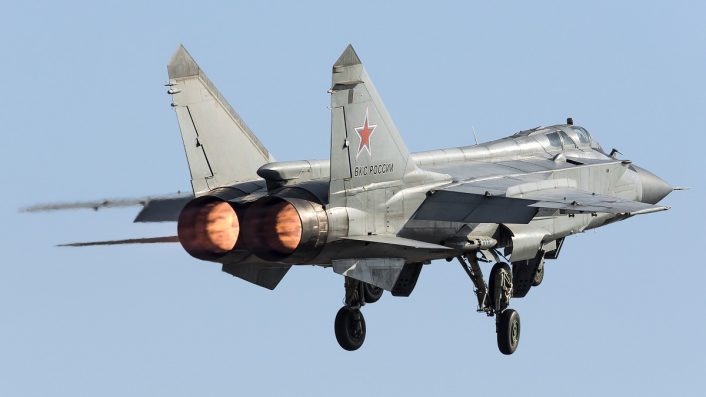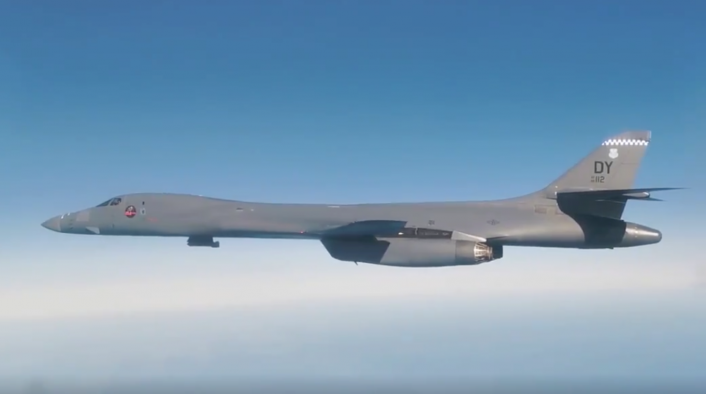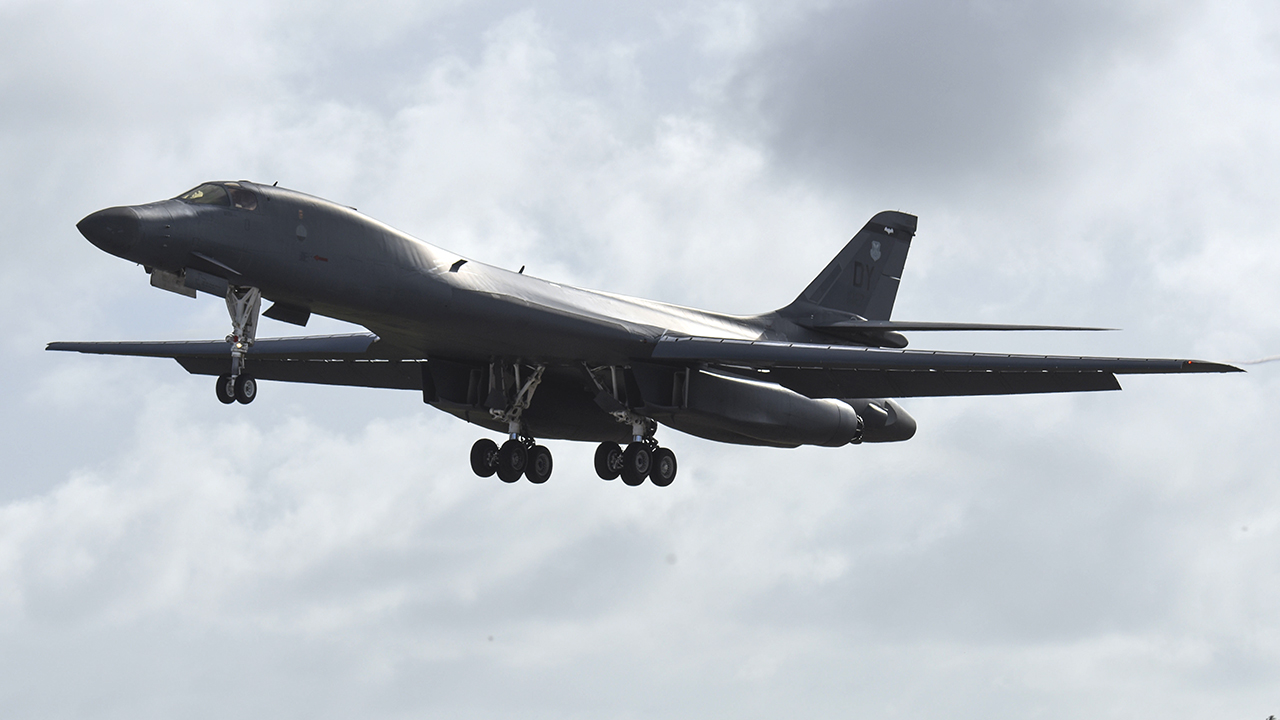With the arrival of two more B-1B Lancers, the deployment of Bomber Task Force 24-2 is now complete.
Two U.S. Air Force B-1B Lancers assigned to the 7th Bomb Wing, Dyess Air Force Base, Texas, landed at Morón Air Base, Spain, on Mar. 26, 2024 bringing the total number of U.S. bombers stationed there to four, completing the deployment of Bomber Task Force 24-2.
According to a public statement “the strategic bombers transited into U.S. European Command’s area of operations, going through the Barents Sea. Throughout the missions the four U.S. aircraft were operating in international airspace and in full accordance with international law.”
During their transition through the Barents Sea, the B-1s were intercepted by a Russian MiG-31 Foxhound.
“To identify an air target and prevent violation of the State Border of the Russian Federation, a MiG-31 fighter from the air defense forces on duty was scrambled”, the Russian MOD said. “The Russian fighter crew identified the aerial target as a pair of U.S. Air Force B-1B strategic bombers. As the Russian fighter approached, the American strategic bombers adjusted their flight course, moving away and then turning around from the State Border of the Russian Federation. The Russian plane returned safely to its home airfield; there was no violation of the State Border of the Russian Federation.”
The one on Mar. 26, was the second intercept of B-1s by Russian MiG-31s in three days: also on Mar. 24, 2024, during their deployment flight from Dyess Air Force Base, Texas, to Morón Air Base, Spain, the first two B-1s of the 7th Bomb Wing, flew over Norway and then in international airspace over the Barents Sea being intercepted by a Russian MiG-31 Foxhound.

“Our ability to maneuver through the Arctic, and forward posture strategic bombers in Europe, is key to assuring our Allies and partners of our commitment to regional security and stability,” said Gen. James Hecker, commander of U.S. Air Forces in Europe – Air Forces Africa and NATO Allied Air Command. “The global security environment requires a forward-leaning approach, and we will continue to meet this challenge through strategic planning and innovative operations.”
BTF 24-2 is a routine Bomber Task Force mission, like many we have observed in the last years, with B-1s, B-52s and B-2s. However, this iteration is part of Large Scale Global Exercise 2024, “an umbrella exercise that incorporates dozens of separate exercises and military activities, under multiple combatant commands, that enable the U.S. Joint Force to train with Allies and partners and improve shared understanding, trust and interoperability on security challenges across the globe.”

In the coming weeks, as routinely happens with all the BTF deployments, the BONEs stationed at Morón will carry out a series of missions across Europe and beyond, integrating with Allies and partners during the deployment: where these missions will be flown, is yet to be seen, although there are chances the B-1s will carry out very long missions in the Med Sea possibly extending to the Eastern Mediterranean Sea and the Middle East, as well as Eastern Europe and, again, towards the Arctic. We’ll see.













